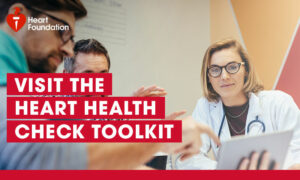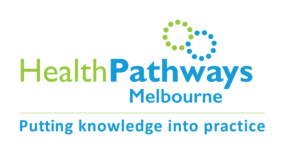
About our PIP QI reports
North Western Melbourne Primary Health Network (NWMPHN) is continuing to provide regular, customised Practice Incentives Program Quality Improvement (PIP QI) reports for any general practice in the region wanting to use data to drive improvement.
These reports are based on the 10 measures for PIP QI. Remember: you can choose any area of data-driven quality improvement for the PIP QI incentive, as long as you are working in partnership with NWMPHN.
However, the 10 measures have been chosen as evidence-based measurements and are the ideal starting point for a QI activity.
About PIP QI Measure 8
In this article we are taking a closer look at:
- PIP QI Measure 8: Proportion of patients with the necessary risk factors recorded to enable a cardiovascular disease (CVD) assessment
- how to use 45–49-year health checks to improve this measure and health outcomes for your patients.
This measure looks at the proportion of active patients who have all the information recorded in the past two years required to calculate their absolute CVD risk. Patients with a current cardiovascular diagnosis are excluded. The age range used is 45 and 74 years; for Aboriginal and Torres Strait Islander patients it is 35 to 44 years.
Why is this important?
The burden of CVD remains high.
In Australia, it
- causes one in four of all deaths
- claims a life every 13 minutes
- accounts for 1,600 hospitalisations per day.
Assessment of absolute CVD risk based on multiple factors requires an evidence-based approach. This is more accurate than treating individual risk factors alone, because it acknowledges cumulative effects.
Creating even a moderate reduction in several risk factors is more effective in reducing overall CVD risk than a major reduction in a single risk factor alone, as the Heart Foundation explains in its Heart Health Check Toolkit.
Which CVD risk factors are assessed?
These factors are considered when assessing absolute CVD risk:
- tobacco smoking status
- diabetes status
- systolic blood pressure
- total cholesterol and HDL cholesterol levels
- age
- sex
The 45–49-year health check
You could use the Medicare Health Assessments (items 701, 703, 705, 707 and 715) to provide a 45–49-year heath check (or item 715 for an Aboriginal or Torres Strait Islander person at any age). A cardiovascular risk assessment should be part of this assessment.
It is handy to collect the data as above, but – more importantly – you can provide an evidence-based comprehensive assessment for those patients.
The 45–49-year health assessment is for patients “at risk of developing chronic disease”. This decision rests on a clinical judgement made by a GP. Factors to consider include, but are not limited to:
- lifestyle risk factors, such as smoking, physical inactivity, poor nutrition or alcohol use
- biomedical risk factors, such as high cholesterol, high blood pressure, impaired glucose metabolism or excess weight
- a family history of a chronic disease.
Practical considerations for 45–49-year health checks
Technology tips
- Agree on a template. Most software comes pre-loaded with one. The team should agree on the components of the check. Are there things you want to add to your check?
- Make it easy for staff to access the CVD risk calculator. If it is not integrated in your practice software, make sure it is in your library.
Recalling patients
- Do you have a team member who can identify eligible patients and recall them using your clinical software or PEN Clinical Audit Tool?
- Who will you invite? Will you invite all 49-year-olds and repeat every year? Or 45-year-olds? Depending on how busy you are you could invite all 45 to 49-year-olds initially to catch up, then, annually, choose an age to invite. The risk in inviting 49-year-olds is that by the time they act on the invite they may no longer be eligible. It might be more practical to invite 45- or 48-year-olds.
- Do you use a recall/reminder system (such as an SMS service) to invite patients to book for an assessment?
The assessments
- Host an education session for staff. Make sure all practitioners are familiar with the 45–49-year template and with performing an absolute CVD risk assessment. How will you structure the assessment? You may consider having them see a practice nurse first, then a GP.
- Establish rules for booking these assessments and ensure staff know them.
- Can you get the practice nurse to arrange pre-testing prior to the appointment, so that blood results are available on the day?
Tips for billing
- How will you bill this? It might be more inviting for the patient if it is bulk-billed as a free health assessment.
- Ensure all practitioners are aware of the health assessment items and the claiming rules.
- If someone is no longer eligible for the health assessment item by the time they present they may be eligible for a 699 Heart Health Assessment.
What’s included in the 45–49-year health assessment?
The RACGP’s Guidelines for preventive activities in general practice (Red Book) suggests a number of areas that should be covered for preventive health in persons aged 45 to 49. Their checklist (.pdf) suggests:
- History: smoking, nutrition, alcohol and physical activity, possible depression, osteoporosis risk factors.
- Examination: weight, height, BMI, BP, skin.
- Tests: lipids, fasting BSL/HBA1c%, cervical screen (if appropriate).
- Calculate:
- risk of diabetes using the Australian type 2 diabetes risk assessment tool (AUSDRISK)
- review fracture risk factors for osteoporosis for women aged 45-years or older
- absolute cardiovascular risk.
 How can the Heart Health Check toolkit help?
How can the Heart Health Check toolkit help?
The Heart Foundation has produced the Heart Health Check Toolkit to assist general practices with CVD risk assessments. It includes tips for improving the recording of risk factors and recalling patients for assessments, among many other helpful resources.
HealthPathways Melbourne 
HealthPathways Melbourne is the best way for GPs to quickly access all the information they need for the following assessments:
- 45 to 49-year-old Health Check
- Health Assessment for Aboriginal and Torres Strait Islander People (MBS Item 715)
- Absolute Cardiovascular Disease Risk Assessment
- Health Assessments
Are you a GP or health professional in our region who doesn’t have access to HealthPathways Melbourne? Request access online or contact info@healthpathwaysmelbourne.org.au




